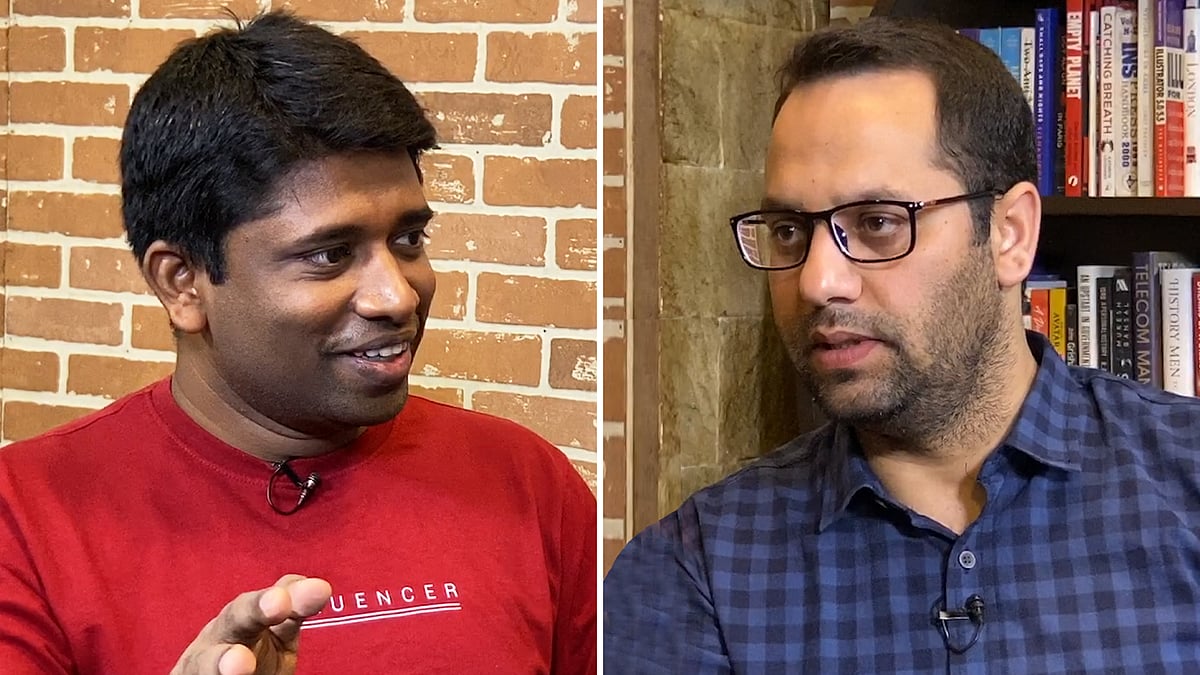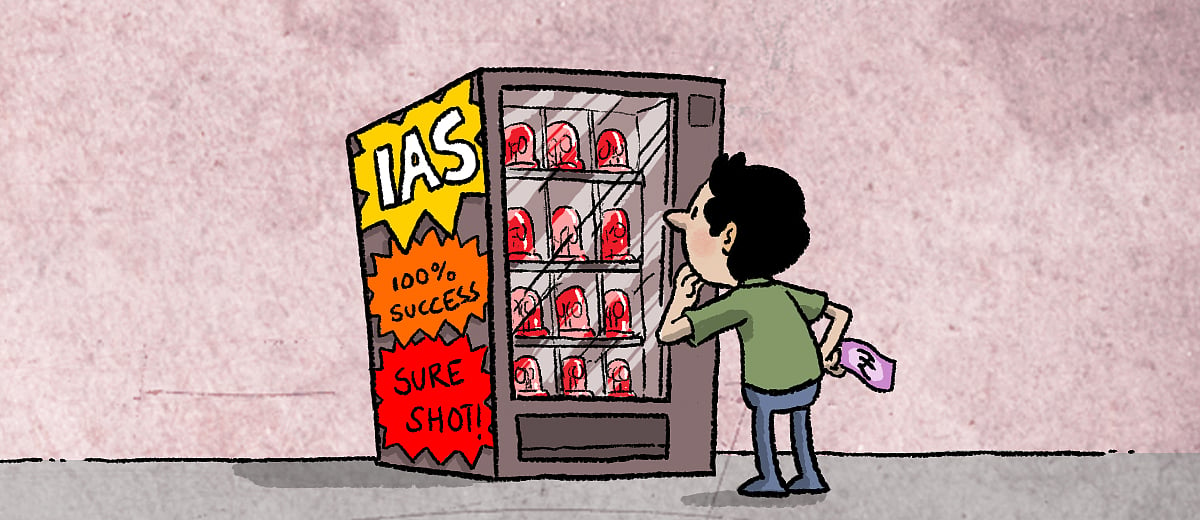In this time of crisis, India’s civil services have stepped up to the plate
The task civil servants have undertaken of regulating and mobilising public institutions and resources to tackle this challenge is enormous.
In June 2005, J Radhakrishnan, then district collector of Nagapattinam in Tamil Nadu, was invited by the United States Department of Education to deliver lectures on his administrative experience handling the human impact of the December 2004 tsunami. The 1992-batch Indian Administrative Service officer of Tamil Nadu cadre had drawn international attention for leading the state’s response and relief work in the Tsunami-hit districts of Thanjavur and Nagapattinam. Three months earlier, the Sri Lankan government had also invited him, along with his IAS colleague Shanta Sheela Nair, to share their approach to tackling the disaster.
In some ways, Radhakrishnan had become the face of India’s response to the calamity that struck the southern coastal states in 2004. However, like in any other disaster, a large number of faceless civil servants worked at various levels to get the affected regions and lives of people back on track. It was an instance of how a determined civil service holds the key to disaster management in India.
Even if India’s bureaucracy is perceived as cumbersome and inefficient in normal times, time and again in times of crisis it has proved to be the pivot around which the country has found its way to recovery. In this context, when the country is fighting the Covid-19 pandemic – and more so on Civil Services Day, celebrated on April 21 – it’s important to see how civil servants are trying to steer it out of this unprecedented crisis.
It’s understandable that in a medical emergency like the coronavirus pandemic, medical professionals – doctors, nurses, paramedic staff – are at the forefront of the efforts to combat the pandemic. However, such efforts can’t be sustained in a governance vacuum, especially in view of the social, economic and human costs of the pandemic as well as the effects of lockdown imposed to contain it. The task before civil servants of regulating, directing and mobilising public institutions and resources for this challenge is enormous.
In concrete terms, this ranges from overseeing the law and order requirements of a long nationwide lockdown, ensuring essential supplies for all, adequate relief for the most vulnerable sections, and enabling the medical staff with the proper conditions and supplies to perform their duties. The last imperative becomes even more important given that the major part of the pandemic response in India is being mounted by public health institutions.
While the civil services is a generic term for more than 25 services at the central level, and more at provincial level, the civil servant’s role in supervising a range of activities and services from the power corridors in Delhi to a village in the remotest part of the country has to be factored in while assessing their crisis response. On top of this, the framing of policy and the general direction of execution is crucial to how the central and state governments are calibrating and recalibrating their strategic and practical responses to the challenge. In this context, the importance of federal coordination between different layers of Centre-state bureaucracies can’t be overstated.
Equally important is the public communication of the governmental response from the authorised sources of policy framers and top administrators. In the increasingly connected world of smartphones, where misinformation and anxieties can be leveraged faster than the restrained seriousness of official information, civil servants needed to step up their public engagement in disseminating authorized information.
In the sphere of communication, the daily task of officially updating the country about where we stand in our fight against the pandemic has been assigned to Lav Agarwal, joint secretary in the Union Ministry of Health and Family Welfare. A 1996-batch IAS officer of the Andhra Pradesh cadre, Agarwal has shunned his usual reticence to present the facts and figures on Covid-19 and related developments with precision and a reassuring calm that authoritative information demands.
For those keen on tracking the nation’s progress in the fight against coronavirus, he has been a daily evening presence. In the process, as he has become the face of India’s battle against the pandemic, media attention has followed. A recent newspaper profile described him as being open to innovative thought while staying rooted to the circumspect bureaucratic wisdom. Another story in a digital news outlet shows his reluctance to hog the limelight in the world of “news” – quite evocative of the time-honoured spirit of keeping a low profile that civil servants are expected to uphold despite holding positions of high authority. It’s another matter that hagiographical accounts of civil servants in the Indian media sometimes haven’t cared for that spirit. Three years ago, I tried to examine some reasons behind this in another piece.
At the level of policy formulation and implementation in Rajasthan, Rohit Kumar Singh, additional chief secretary (medical and health) stuck to “ruthless containment” as the premise on which the much lauded Bhilwara model was built.
In Bihar, a state widely seen as having poor health infrastructure and prone to dangerous spread of the disease, the bureaucratic leadership of the state’s fight against coronavirus has been quite visible. It has been led by Sanjay Kumar, principal secretary in the health department. A 1990-batch IAS officer, Kumar has been coordinating efforts with the state’s 38 district administrations as well as communicating and responding to citizens on social media on the latest pandemic scene and the state government’s efforts to combat the challenge. Despite encouraging signs of only 127 people testing positive (barely one percent of 12,077 tests done) with just two deaths, Kumar is not letting complacency set in. In fact, the state has embarked on an ambitious project of screening its entire 11.5 crore population. (Bihar is the third most populous state in the country.)
However, along with policy framing and supervision, the more challenging role for civil servants has been implementation. At the secretarial level of bureaucratic steering, various high-ranking officials in secretariats of different states are pooling human and material resources for the fight against the disease. However, it’s at the district administration level that the challenge of implementing the broader policies and guidelines have to be handled by relatively young district magistrates. Word-of-mouth stories from across the country suggest that many young IAS and Indian Police Service officers have won enormous goodwill from the people for the sincerity and hard work they have put in making the fight more result-oriented and the lockdown less painful for the people. Reports in regional media and local news portals are full of such reports.
The social media handles of both IAS and IPS associations have compiled non-media accounts as well as media stories about the way civil servants are finding ways to respond to the challenge. Anyone interested in knowing what young, mid-level and senior officials of these key services are doing in the country’s fight against the pandemic would find many informative stories on these handles. Particularly interesting is the role young civil servants posted in remote districts of the country are playing in enforcing the lockdown, easing the hardships of it with essential supplies and support for the vulnerable, and bringing government’s relief package to the people. In addition to it, district magistrates have been working to strengthen local health infrastructure.
A mammoth exercise like this would have some rough edges and loose ends, but that shouldn’t make us lose sight of how India’s civil service is acquitting itself commendably in this times of crisis. They haven’t been helped by a spurt of misinformation that distracts from the larger work of relief and fight against the disease.
However, more regular debunking of such misinformation should also be one of their priorities to further strengthen the goodwill they have earned in different corners of the country, particularly remote pockets.
In terms of the quality of human capital, Indian civil servants are as good as any pool of generalists in the world. The question has always been about the realization of that potential and delivery. In India’s response to the coronavirus pandemic, they have been behind-the-scenes policy formulators as well as hands-on executives. Warts and all, as they usually do in times of crisis, Indian civil servants are proving their mettle. It’s the steel frame, to borrow David Lloyd George’s phrase from a different era and context, that India can rely on.
 NL Interview: Kannan Gopinathan on the Kafkaesque nature of bureaucracy, and the need to question those in power
NL Interview: Kannan Gopinathan on the Kafkaesque nature of bureaucracy, and the need to question those in power
 Coaching Centres: The IAS vending machines of Delhi
Coaching Centres: The IAS vending machines of Delhi